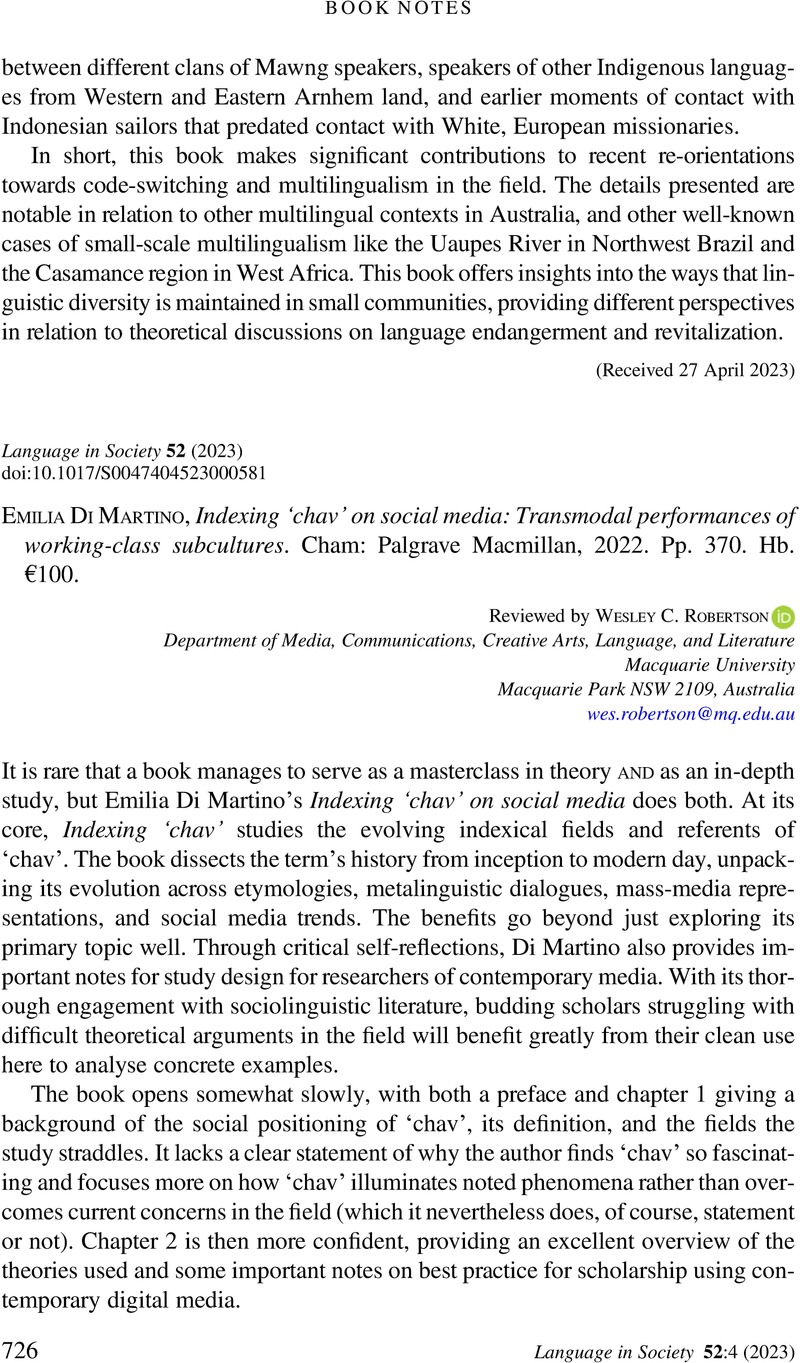No CrossRef data available.
Article contents
Emilia Di Martino, Indexing ‘chav’ on social media: Transmodal performances of working-class subcultures. Cham: Palgrave Macmillan, 2022. Pp. 370. Hb. €100.
Review products
Emilia Di Martino, Indexing ‘chav’ on social media: Transmodal performances of working-class subcultures. Cham: Palgrave Macmillan, 2022. Pp. 370. Hb. €100.
Published online by Cambridge University Press: 31 August 2023
Abstract
An abstract is not available for this content so a preview has been provided. Please use the Get access link above for information on how to access this content.

- Type
- Book Notes
- Information
- Copyright
- Copyright © The Author(s), 2023. Published by Cambridge University Press



